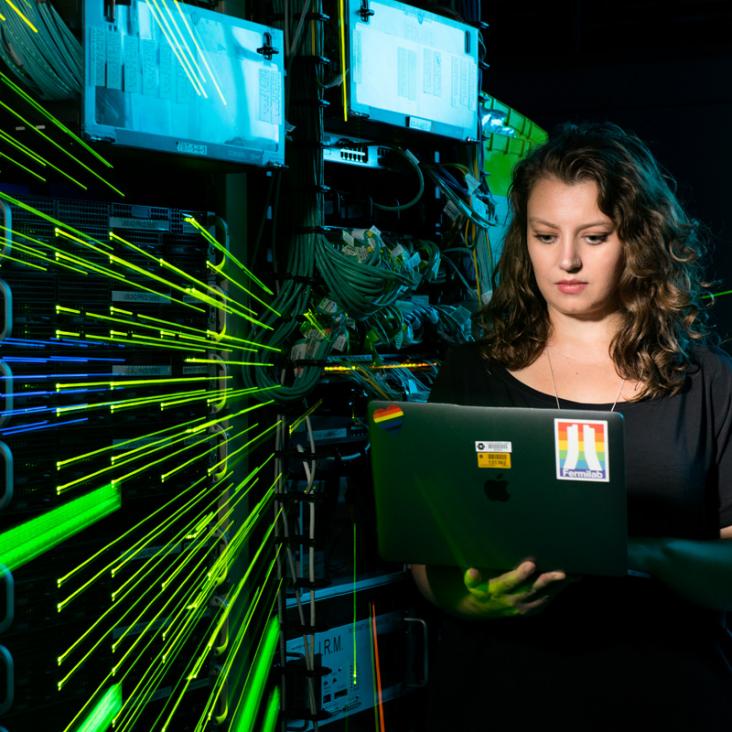Deep neural network for pixel-level electromagnetic particle identification in the MicroBooNE liquid argon time projection chamber
Physical Review D American Physical Society 99:9 (2019) 092001
Abstract:
We have developed a convolutional neural network that can make a pixel-level prediction of objects in image data recorded by a liquid argon time projection chamber (LArTPC) for the first time. We describe the network design, training techniques, and software tools developed to train this network. The goal of this work is to develop a complete deep neural network based data reconstruction chain for the MicroBooNE detector. We show the first demonstration of a network's validity on real LArTPC data using MicroBooNE collection plane images. The demonstration is performed for stopping muon and a νμ charged-current neutral pion data samples.First measurement of νμ charged-current π0 production on argon with the MicroBooNE detector
Physical Review D American Physical Society (APS) 99:9 (2019) 091102
Search for light sterile neutrinos with the T2K far detector Super-Kamiokande at a baseline of 295km
Physical Review D American Physical Society 99:7 (2019) 071103
Abstract:
We perform a search for light sterile neutrinos using the data from the T2K far detector at a baseline of 295 km, with an exposure of 14.7(7.6)×10^20 protons on target in neutrino (antineutrino) mode. A selection of neutral-current interaction samples is also used to enhance the sensitivity to sterile mixing. No evidence of sterile neutrino mixing in the 3+1 model was found from a simultaneous fit to the charged-current muon, electron and neutral-current neutrino samples. We set the most stringent limit on the sterile oscillation amplitude sin^2θ24 for the sterile neutrino mass splitting Δm^2v41<3×10^−3eV^2/c^4.Design and construction of the MicroBooNE Cosmic Ray Tagger system
Journal of Instrumentation IOP Publishing 14:4 (2019) P04004
Abstract:
The MicroBooNE detector utilizes a liquid argon time projection chamber (LArTPC) with an 85 t active mass to study neutrino interactions along the Booster Neutrino Beam (BNB) at Fermilab. With a deployment location near ground level, the detector records many cosmic muon tracks in each beam-related detector trigger that can be misidentified as signals of interest. To reduce these cosmogenic backgrounds, we have designed and constructed a TPC-external Cosmic Ray Tagger (CRT) . This sub-system was developed by the Laboratory for High Energy Physics (LHEP), Albert Einstein center for fundamental physics, University of Bern. The system utilizes plastic scintillation modules to provide precise time and position information for TPC-traversing particles. Successful matching of TPC tracks and CRT data will allow us to reduce cosmogenic background and better characterize the light collection system and LArTPC data using cosmic muons. In this paper we describe the design and installation of the MicroBooNE CRT system and provide an overview of a series of tests done to verify the proper operation of the system and its components during installation, commissioning, and physics data-taking.High-pressure gaseous argon TPC for the DUNE near detector
Proceedings of the 2019 Meeting of the Division of Particles and Fields of the American Physical Society, DPF 2019 (2019)


